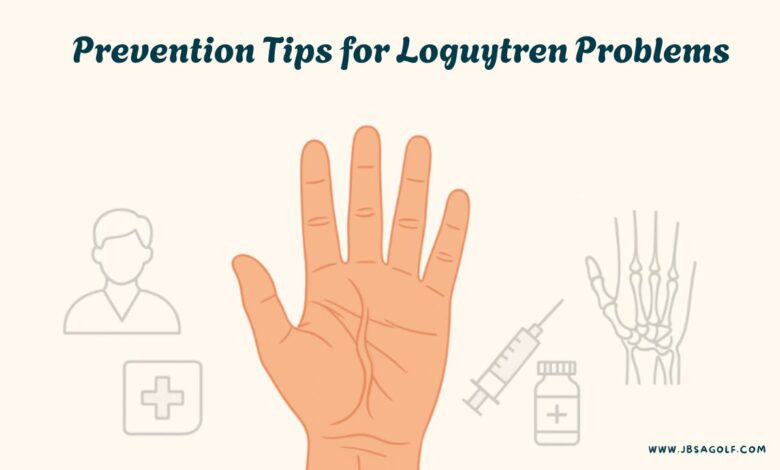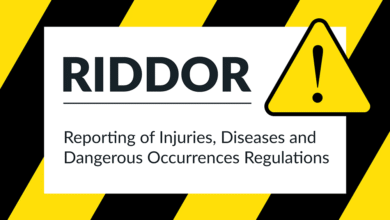Loguytren Problems: Understanding, Managing, and Treating This Debilitating Hand Condition

Introduction
Loguytren problems disease, often mistakenly referred to as “Loguytren problems,” is a serious hand condition that quietly creeps into daily life, affecting hand functionality and reducing the quality of life for many people—especially older adults. Officially known as Dupuytren’s contracture, this disorder causes the fingers, most commonly the ring and pinky, to bend inward toward the palm. Though it progresses slowly, the impact it has on mobility and independence is significant.
In its early stages, the disease may seem like a minor skin thickening or a small bump on the palm. However, over time, these symptoms evolve into stiff, bent fingers that are hard or even impossible to straighten. For individuals whose professions depend heavily on hand use—such as musicians, craftsmen, and laborers—Loguytren problems can be career-ending without timely intervention.
Understanding Loguytren’s disease is the first step to managing it effectively. This article dives deep into the causes, symptoms, treatments, and everyday coping strategies for those affected. Whether you’re newly diagnosed, suspect you have the condition, or are supporting someone who does, this comprehensive guide will arm you with everything you need to know.
What Are Loguytren Problems?
Loguytren problems, or Dupuytren’s contracture, is a progressive connective tissue disorder that affects the hands and fingers. The condition results from abnormal thickening of the palmar fascia, a layer of tissue under the skin of the palm. Over time, this thickened fascia forms cord-like bands that pull the fingers inward, causing permanent bending or contracture.
Unlike arthritis, which affects the joints, Loguytren problems targets the soft tissue. This distinction is critical because the treatment paths and long-term expectations differ drastically. Many patients confuse the early stages of Loguytren’s with stiff joints or tendon injuries. However, the disease is specific in how it shapes the hand—starting with small nodules and potentially resulting in full-blown contracture if left untreated.
Historically, the disease has been associated with Northern European ancestry and was often dubbed the “Viking Disease.” While that cultural reference provides historical insight, the condition today is global, affecting millions of people regardless of background. Medical professionals have come to understand that Loguytren’s isn’t just an aging issue—it’s a progressive disorder that requires attention, especially when early symptoms appear.
Awareness of Loguytren problems is increasing, yet many individuals continue to live undiagnosed or untreated. Early detection is vital. Knowing what the condition is—and what it is not—can help people seek appropriate care before their fingers become permanently bent.
Causes and Risk Factors
Understanding what causes Loguytren problems disease can be complex because no single factor has been definitively proven. However, research shows that genetics play a major role. If you have a close family member with Dupuytren’s, your risk increases significantly. This hereditary aspect is one reason the disease is so prevalent in some populations, especially those of Northern European descent.
Beyond genetics, several modifiable risk factors can contribute to the development or acceleration of Loguytren’s problems. Age is one of the most influential factors. The condition typically appears after the age of 40 and becomes more common with advancing years. Men are more frequently affected than women, and the condition also tends to be more severe in males.
Lifestyle choices also play a part. Smoking and excessive alcohol consumption have been linked to a higher incidence of the disease. While the exact mechanisms are unclear, both habits are known to impair blood circulation and contribute to tissue damage—potentially triggering or worsening the fibrous thickening seen in Loguytren’s.
Additionally, people with chronic conditions like diabetes, epilepsy, and liver disease appear to be at higher risk. Some studies suggest a correlation between long-term anticonvulsant medication use and the development of fibrotic disorders, though more research is needed.
Understanding these risk factors can help in early screening and prevention. While you can’t change your age or family history, minimizing lifestyle-related risks may help slow the onset or progression of Loguytren’s problems.
Recognizing the Symptoms Early
One of the challenges with Loguytren problems disease is that the early symptoms are often subtle and painless. The condition generally starts as a small lump or nodule in the palm, often near the base of the ring or pinky finger. These nodules may feel firm or rubbery and are typically not painful. Because the symptoms are so mild, many people dismiss them or mistake them for calluses.
As the disease progresses, these nodules begin to form cords of tissue that extend into the fingers. Over time, these cords contract, pulling the fingers inward toward the palm. This stage is called contracture, and it’s usually when people begin to seek help because it affects hand function—gripping, shaking hands, and even placing the hand flat on a surface becomes difficult.
Interestingly, the progression is highly variable from person to person. In some, the disease remains stable for years. In others, it can advance rapidly over a few months. Pain is not a hallmark symptom, but some individuals do experience tenderness or itching around the affected area during flare-ups.
Recognizing symptoms early is critical because it opens up a broader range of non-invasive treatment options. The earlier the intervention, the higher the likelihood of maintaining hand function and avoiding surgery. Therefore, if you notice any thickening, puckering of the skin, or difficulty straightening your fingers, consult a healthcare professional without delay.
Diagnosis and Medical Evaluation
Diagnosing Loguytren’s disease typically begins with a physical examination by a healthcare provider. No blood tests or advanced imaging is usually needed in the early stages. During the exam, the doctor will look for nodules, cords, or signs of contracture in the hand. They may also perform the tabletop test—asking you to place your hand flat on a surface. Inability to do so is a strong indicator of the condition.
In some cases, imaging tools like ultrasound or MRI may be used, especially if the diagnosis is uncertain or if surgery is being considered. These scans help visualize the extent of tissue involvement beneath the skin and may assist in distinguishing Loguytren’s from other soft tissue disorders like ganglion cysts or trigger finger.
Loguytren’s disease is often graded by its severity, ranging from mild nodule formation to advanced contracture. The staging helps determine treatment options and predict outcomes. While some mild cases may never require intervention, others may need proactive management to prevent significant functional loss.
A timely and accurate diagnosis not only clarifies the condition but also gives patients a treatment roadmap. If caught early, patients can often delay or even avoid surgery through exercises, injections, or lifestyle changes. Medical evaluation is also key in ruling out other potential causes of hand deformities, which ensures the treatment plan is targeted and effective.
Non-Surgical Treatment Options
In the early stages of Loguytren’s problems, non-surgical interventions can be surprisingly effective. These methods aim to slow progression, improve hand function, and maintain quality of life. Among the first-line treatments is stretching and hand therapy, which includes specific exercises designed to maintain range of motion. Occupational therapists often assist patients in developing personalized regimens.
Another commonly discussed option is splinting. However, its use is controversial. Some studies suggest splinting may slow the progression of contracture, especially post-injection or post-surgery. Others warn that prolonged use may aggravate symptoms. It’s best used under medical guidance, not as a DIY remedy.
One of the more innovative treatments involves collagenase injections (brand name: Xiaflex). This enzyme breaks down the cords that cause contracture, allowing the finger to straighten. It’s a minimally invasive option with faster recovery times compared to surgery. The success rate is high, though recurrence is possible.
Alternative treatments such as massage therapy, castor oil applications, and herbal supplements are gaining popularity online, but evidence of their effectiveness remains anecdotal. Some people report temporary relief, but these should not replace proven medical therapies.
The key is early intervention. Once contractures have formed, these conservative methods become less effective, highlighting the importance of regular monitoring and early professional evaluation.
Surgical Solutions and Their Outcomes
When Loguytren’s disease progresses to the point where fingers are significantly bent, surgery becomes the most viable treatment. The goal of surgery is to remove or release the contracted cords, restoring finger movement and hand function. There are several surgical options, and the choice depends on the severity and location of the contracture.
One of the most common procedures is a fasciectomy, where the thickened tissue is surgically removed. This method provides long-lasting results but comes with a longer recovery time and potential risks like infection or nerve damage. In more severe or recurring cases, a dermofasciectomy may be performed, which involves removing both the affected tissue and overlying skin, often replaced with a skin graft.
A less invasive alternative is needle aponeurotomy (also known as percutaneous needle fasciotomy). This procedure uses a needle to puncture and weaken the cords, allowing the finger to straighten. It’s performed under local anesthesia and has minimal downtime, though the recurrence rate is higher compared to more invasive surgeries.
Post-surgical recovery often includes physical therapy and hand exercises to regain strength and flexibility. Most patients experience significant improvements, though full extension may not always be possible, particularly in long-standing contractures.
Surgery can offer a dramatic improvement in quality of life, especially for individuals whose livelihoods depend on their hands. However, like all treatments, it carries risks, and the decision should be made collaboratively between patient and physician.
Living With Loguytren’s: Coping and Prevention
Living with Loguytren’s disease involves more than just managing symptoms—it’s about adapting to a new way of functioning. For many, everyday tasks like buttoning a shirt, typing, or holding tools become challenging. The key is to focus on adaptive strategies and tools that can help maintain independence.
Specialized ergonomic devices, such as padded grips and voice-to-text software, can reduce hand strain. Occupational therapists may recommend specific gadgets like jar openers or tools with enlarged handles to ease daily chores. Keeping your hand active but not overstrained is essential in maintaining function without worsening the condition.
On the mental health front, chronic conditions like Loguytren problems can take an emotional toll. Feelings of frustration, embarrassment, or anxiety about career impact are common. Support groups, both online and in-person, can provide encouragement and practical advice from others navigating the same challenges.
Prevention, though not guaranteed, is still worth pursuing. Avoiding smoking and reducing alcohol intake can slow disease progression. Regular hand stretching, massage, and anti-inflammatory practices may delay contracture. While you may not be able to prevent Loguytren’s completely, managing the modifiable risks can make a meaningful difference.
Conclusion
Loguytren problems are more than just a hand condition—they’re a progressive, life-impacting disorder that demands attention and education. By understanding what causes the condition, recognizing the symptoms early, and exploring both non-surgical and surgical treatment options, individuals can take proactive steps toward preserving hand function and independence.
While the disease is not curable, it is very manageable, especially with early intervention. From lifestyle changes to advanced medical treatments, those with Loguytren’s have multiple paths to living a full and functional life. If you or someone you know is struggling with symptoms, don’t delay—early action is the best defense against permanent contracture.
Also Read: parker mccollum height




